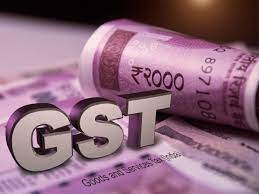Goods and Services Tax (GST) is a comprehensive indirect tax levied on the supply of goods and services in India. It is a value-added tax system that replaced multiple indirect taxes levied by the central and state governments. Here is an overview of how GST works in India:
1. Structure: GST in India is a dual tax system, comprising Central Goods and Services Tax (CGST) levied by the central government and State Goods and Services Tax (SGST) levied by the state governments. Additionally, an Integrated Goods and Services Tax (IGST) is imposed on inter-state supplies and imports.
2. Taxable Events: GST is applicable at each stage of the supply chain, including manufacturing, sale, and consumption of goods and services. It is levied on the value-added at each stage, meaning businesses can claim credits for taxes paid on inputs and utilize them to offset their GST liability.
3. GST Registration: Businesses with an annual turnover exceeding the specified threshold must register for GST. Once registered, they receive a unique Goods and Services Tax Identification Number (GSTIN).
4. GST Rates: Goods and services are classified under different tax slabs, namely 0%, 5%, 12%, 18%, and 28%. Some goods and services are exempted from GST or fall under the composition scheme, which offers a lower tax rate for small businesses.
5. Input Tax Credit: One of the key features of GST is the provision for claiming input tax credit (ITC). Businesses can claim credit for the GST paid on inputs, including goods and services used in their business operations. This helps eliminate the cascading effect of taxes and reduces the overall tax burden.
6. Return Filing: Registered businesses are required to file periodic GST returns, providing details of their outward supplies, inward supplies, and tax paid. The returns are filed electronically through the Goods and Services Tax Network (GSTN) portal.
7. Compliance and Audit: GST compliance involves maintaining proper records of transactions, issuing tax invoices, and reconciling data with suppliers and customers. The government carries out audits and scrutiny to ensure compliance with GST provisions.
8. E-Way Bill: For the movement of goods worth a certain threshold, an electronic waybill (E-Way Bill) must be generated and carried along with the goods. The E-Way Bill helps in tracking the movement of goods and ensures compliance with GST provisions.
9. Anti-Profiteering Measures: The government has implemented anti-profiteering measures to prevent businesses from unfairly benefiting from the GST rate reductions. Businesses are required to pass on the benefit of reduced taxes to customers by lowering prices.
It is important to note that the GST structure and regulations are subject to periodic revisions and amendments by the government based on evolving economic and policy considerations.








